Dubai-based designer Siba Mohtadi is using social media to open minds and hearts to her war-weary homeland, the Syrian Arab Republic. Mohtadi posts images on her Instagram account #FollowMeToSyria that illustrate still-beautiful Syria, where hotels and cafes are open for business, people go about their daily lives, and nature thrives, in spite of war and the continuing and monumental humanitarian crisis.
Mohtadi was inspired by one of the first Instagrammers to attract global attention, Russian photographer Murad Osmann, who’s 2011 “Follow Me” series riffed his girlfriend’s attempts to stop his obsessive picture-taking. As she pulled him away, he shot that instead, creating a portfolio of pictures of him being led by the hand through some of the world’s most iconic scenery. The series attracted 4.5 million Instagram followers.
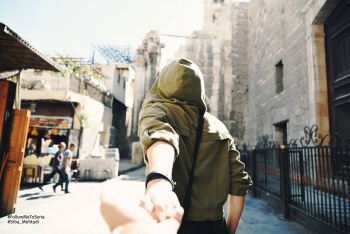
Most of Mohtadi’s pictures feature Damascus. She told Green Prophet, “I did this project because my heart bleeds with love for Syria. All you hear is the devastation of war, the pain and tears in people’s eyes. I can’t pretend that we don’t have war, I can’t pretend that we are not hurting, but I can show you the beautiful country we love, that we call home.”
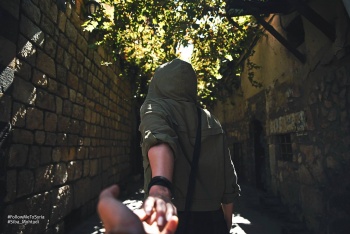
The Damascus borough of Bab Tuma (meaning “Thomas’ Gate”, and shown above) contains one of the seven gates within the old walled city. Named for one of Christ’s 12 apostles, it is an important landmark of early Christianity, now the Northern Levant seat of the Greek Orthodox and Greek Catholic Churches.
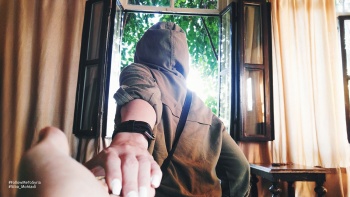
Mohdati also captures details of private spaces, including lovely old Damascus homes. Islamic architecture relies on an enduring architectural form – the courtyard house – which places interior rooms around a central open space, invisible from the street.
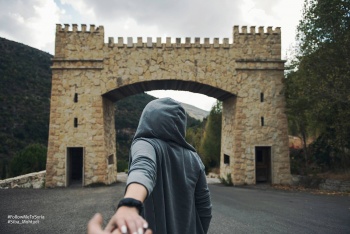
Wadi al Kal3 in Latakia, Syria’s principal port city and capital of the Latakia Governorate, sits about 70 miles from Cyprus. Inhabited for more than 4,000 years, it was ruled at times by the Seleucids, Romans, Ummayads and Abbasids It’s now the seat of the Alawite State, and Syria’s 5th-largest city (image above)..
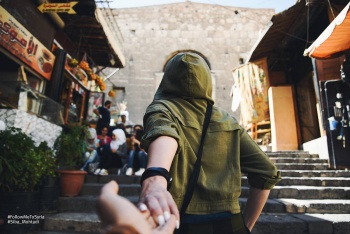
The backdrop for the shot above is the Damascus’ stone-built Old City near the 300-year-old af-Nofara café. Evening gatherings in this area usually featured “hakawatis” – traditional reciter-performers of old Arab legends. But television and the internet caused audiences to dwindle. The war has silenced the remaining hakawatis.
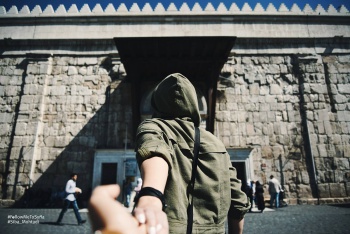
The Great Mosque of Damascus, or Umayyad Mosque, one of the largest and oldest in the world, is considered as the fourth-holiest of Islamic sites. Legend has it that it holds the head of John the Baptist. Fortunately the war has not harmed this treasure, whereas it’s namesake mosque in Aleppo was shelled in 2013, and its minaret toppled.
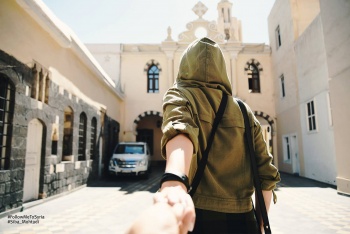
The hooded figure in each shot is Mohtadi. A graphic designer and professional photographer, she trained her brother to snap the images, which she staged and directed. Her current series was shot in Damascus, Tartus, Latakia, and Masyaf over a period of 15 days. She plans to extend the project to wider Syria, as travel allows.
Images courtesy of Siba Mohtadi’s Facebook page

